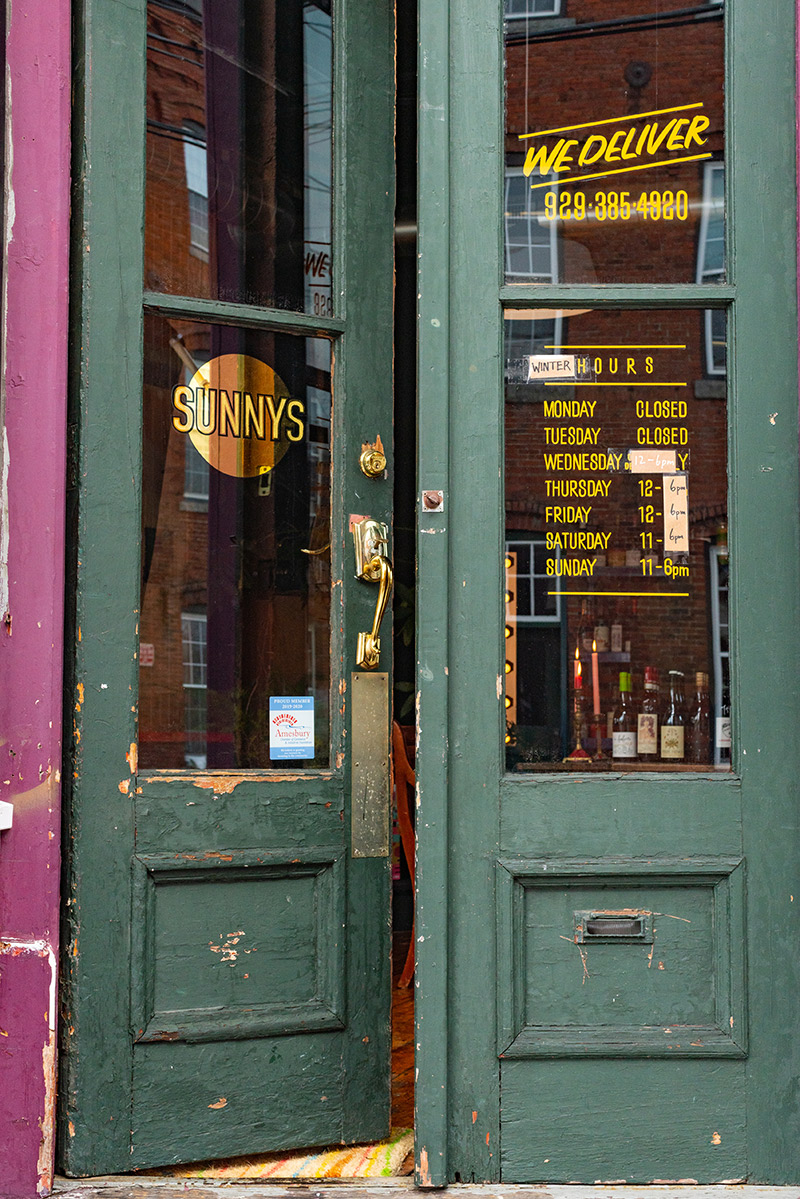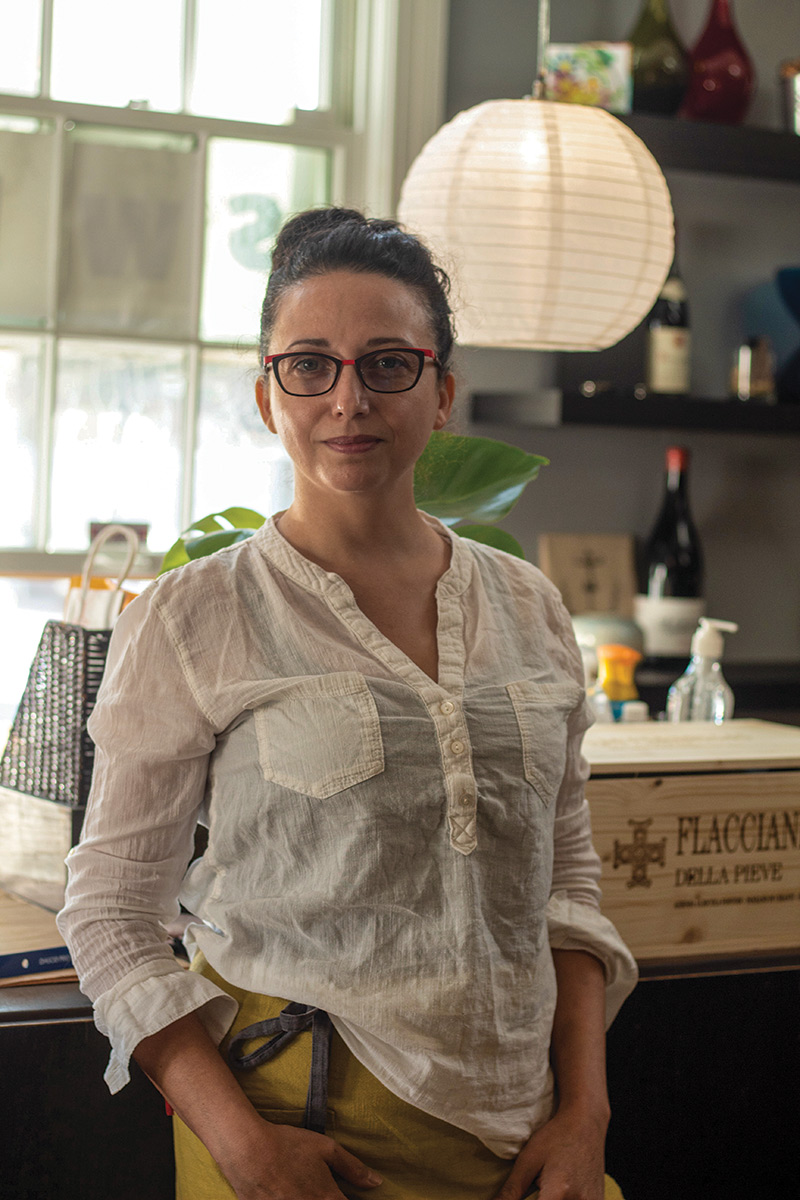“How do you feel about funk?” Caitlin Frame asked me as I was browsing at SUNNYS Natural Wine Shop, which she opened late last year in Amesbury with partner Laura Poladsky. “Like really intense barnyard funk.”
I like funk—the concentrated aroma that is often connected with a good Chianti brings back pleasant memories of a vacation in Italy. And that’s part of the point of “natural wine”—this tiny segment of overall wine production is focused on creating a product that is reflective of a very specific patch of land at a specific point in time.

“Natural wines, or wines made without heavy-handed interventions such as industrial farming practices, chemical corrections, and manipulations throughout the winemaking process, simply tell a more honest story of the wine itself, where it came from and who made it,” says Matt Mollo, whose Ipswich-based company SelectioNaturel has imported exclusively natural wines from Italy for a decade now. “They are not always perfect, but they are in many ways more ‘humane.’”
Which means you can get funk, or sediment, or slight effervescence—and the wine can vary from vintage to vintage—something that most conventional wine makers won’t tolerate. They are aiming to create a consistent product, so consumers know what to expect from one bottle to the next. Variables from weather in the vineyard to the types of wild yeast that are floating in the air can impact the taste and aroma of the finished product, so conventional winemakers use a variety of techniques to quiet those impacts, presenting the same flavor profile year after year.

Natural winemakers share some traits with organic producers—both start with grapes farmed without synthetic pesticides or fertilizers. But from there, organic winemakers are allowed to employ many of the same approaches as conventional winemakers, often using commercial yeast to start fermentation, rather than the wild yeast in the air that would naturally turn grapes into alcohol or eventually vinegar. Other possible additives include sugar, acid, or other ingredients to craft the flavor profile they want.
Natural winemakers eschew all of that, allowing fermentation to occur spontaneously, and adding little else. That means the winemaker takes less control of the finished product, which may display a variety of tastes and aromas conventional wine fans might not be familiar with.
“With natural wine, you don’t ask it to promise anything,” says SUNNYS’ Poladsky. “It’s actually about getting excited that it could be different.”
Another difference: many organic and conventional winemakers use sulfites liberally—a flashpoint for a certain segment of consumers. Sulfites [also known as SO2] are a naturally occurring preservative, and can also be used in natural wines, generally in substantially smaller amounts, to maintain the wine’s flavor after it is bottled.

“Using SO2 in winemaking is like using salt in a dish,” says Mollo, noting that sulfites are the only ingredient—among some 60 allowed in conventional wine—required to be listed on wine bottles in the United States. “Just the right amount, at the right time can benefit wines greatly and make them both more reliably sellable and enjoyable to drink.” Mollo’s portfolio includes wines that are completely free of sulfites, as well as those that use them sparingly.
While you can absolutely find something wild that will challenge your expectations, if you just want a familiar sipper for a weeknight meal, there are plenty of possibilities.
“For people who want something that’s classic, we have so many options,” says Frame from SUNNYS. Hand-selling and getting to know customers is critical with natural wine, and it’s something that Frame and Poladsky are very good at. That’s likely in part from Frame’s years of experience working at some of New York City’s top restaurants, including Frenchette, which drew national attention for its natural wine program.
Where to Buy Natural Wine
Joppa Fine Foods in Newburyport was an early believer in natural wines—the shop has sold them exclusively for nearly a decade, and recently launched a wine club to help people explore, and dispel, some myths. “As more hype has developed around the term, I think a lot of people are under the impression that natural wines are only “funky,” says Owner Abbie Batchelder. “They don’t realize that there are just as many wines that are approachable and familiar.” Here are suggestions from area shops to start you exploring.
Joppa Fine Foods
+ Montemelino Malpasso, Umbria, red, $18. This 100 percent Sangiovese, created by a multi-generation, female-run winery, is a crowd-pleaser. Rustic fruit, herbaceous, and simple but made with great care and precision, this is the perfect table wine to share with friends or enjoy with pizza.
+ Vino di Anna Palmento Bianco, Sicily, orange, $30 A great introduction to orange or skin-contact wine is full of bright, sunny Mediterranean orchard fruit, but with that signature Mount Etna volcanic minerality.
SUNNYS, Amesbury
+ Azienda Agricola Denavolo, Catavela 2019, Emila-Romana, orange, $23 This is the shop’s go-to wine. A perfect blend of grapes with five days of skin contact. Super fresh lemon-bomb, with minerality for days and light floral notes.
Wine-sense, Andover
+ Old Westminster, Rev, Sixth Edition, Maryland, red, $26 This red is an ideal blend for cold wintry nights, with a bouquet of herbal tea, spices, and wet clean soil. The palate is plummy but not sweet, dominated by red cherry. Full body.
+ Domaine Vincent Fleith, Alsace, white, $25 Think of bright dandelions with ripe Asian and yellow pears in this white wine. Mid-body, bright, and refreshing with a long, clean finish.

